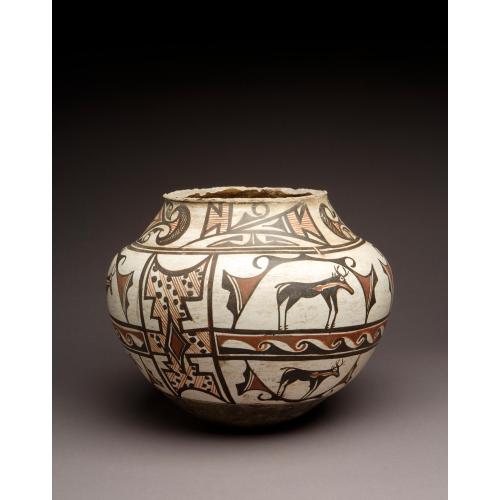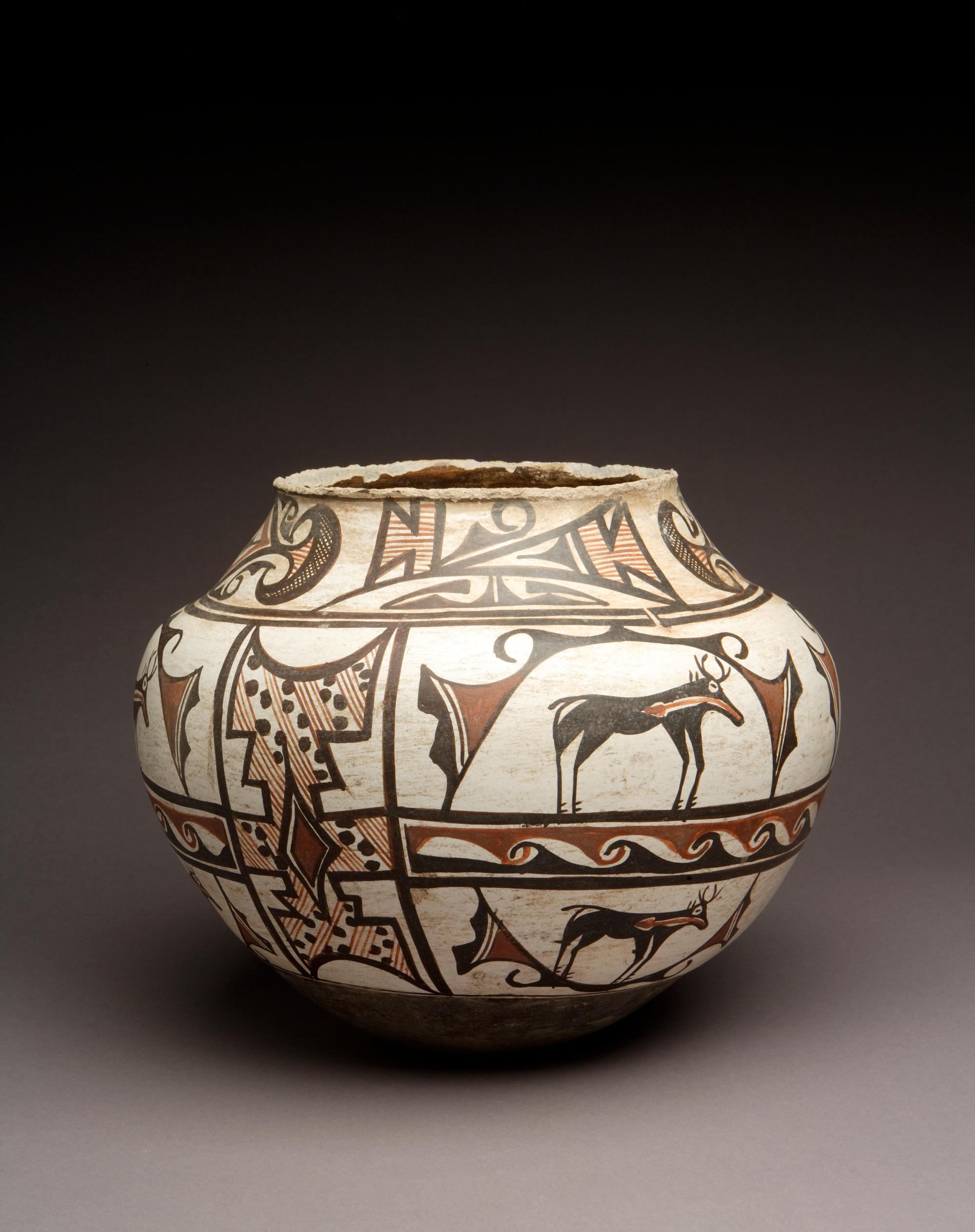
Photograph by Addison Doty. Copyright 2010 School for Advanced Research.
Water jar | K'yabokya de'ele
Date: c. 1890
Artist or Maker: Unknown
Dimensions:
Dimensions: 27.9 × 34.3 cm (11 × 13 1/2 in.)
Weight: 3.8 kg (8.35 lb.)
Medium: clay | paints
Credit Line: Indian Arts Fund purchase for the permanent collection, 1923.
Place Made:
Zuni Pueblo, McKinley County, New Mexico, Southwest, United States, North America
Object Number: IAF.12
Not on view
Tribal Collection Review RemarksOctavius Seowtewa during collection review visit Nov. 16 and 17, 2009 (Events Record “Collection Review: Zuni Tribe, Review 3”): The designs and motifs used are typical of Zuni storage jars. The chipping around the interior of the rim is what would be expected if a ladle were being used to access water inside.
As per Jim Enote and Octavius Seowtewa during collection review visit Jan. 9 and 10, 2014 (Events Record “Collection Review: Zuni Tribe, Review 12”):The rim is slightly flared so that it could be used as storage jar with a cover tied over the top. The neck is decorated with black and red bird designs, such as wings and tails filled with red rain line hatching, and bird heads. There are two four-sided stars, and part of the design that surrounds them contains black cross-hatching. There is a double border line with a line break between the neck and the body designs. The body is divided into three horizontal levels (mirrored on either side of the jar). The upper and lower levels each contain two deer, with each deer inside a house arch. The deer houses are made up of bird elements such as tail feathers, heads, and crests. The deer are black with red heartlines. Between the two deer bands is a narrow band with black and red water wave designs. The horizontal levels are divided by two vertical compartments (also mirrored on either side of the jar). The vertical compartments contain a design with a red four-sided star at the center, surrounded by a wing/stepped cloud design filled with red rain line hatching and black seed/planting hole/hail spots. There is a single border line with a line break between the body and the base. The base is a solid dark brown and shows moderate wear.
The word for a water jar in Zuni is “k'yabokya de'ele,” which translates to “water container vessel” in English. The intended use for these jars was to store and carry water, but they could also be used to store other items.
In Collection(s)
Bibliography:
The Pottery of Zia Pueblo
- Pg. 222
- Fig. 12.4
The Indian Arts Research Center, in collaboration with Native American community scholars, strives to present accurate collections records. Records may be updated as new information becomes available and is reviewed with the Native American community having cultural affinity to particular items. Please write to iarc@sarsf.org if you have questions or concerns related to the documentation.


